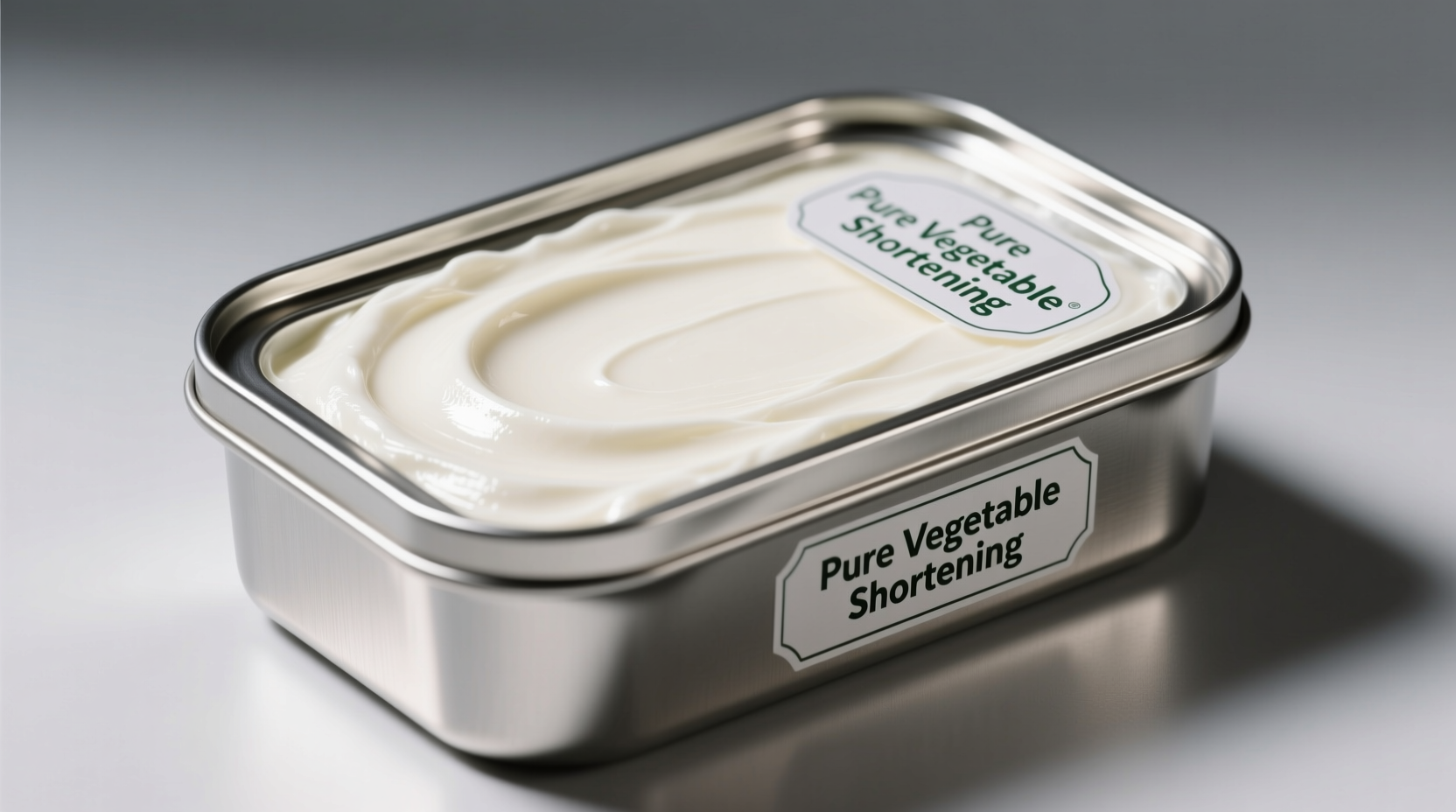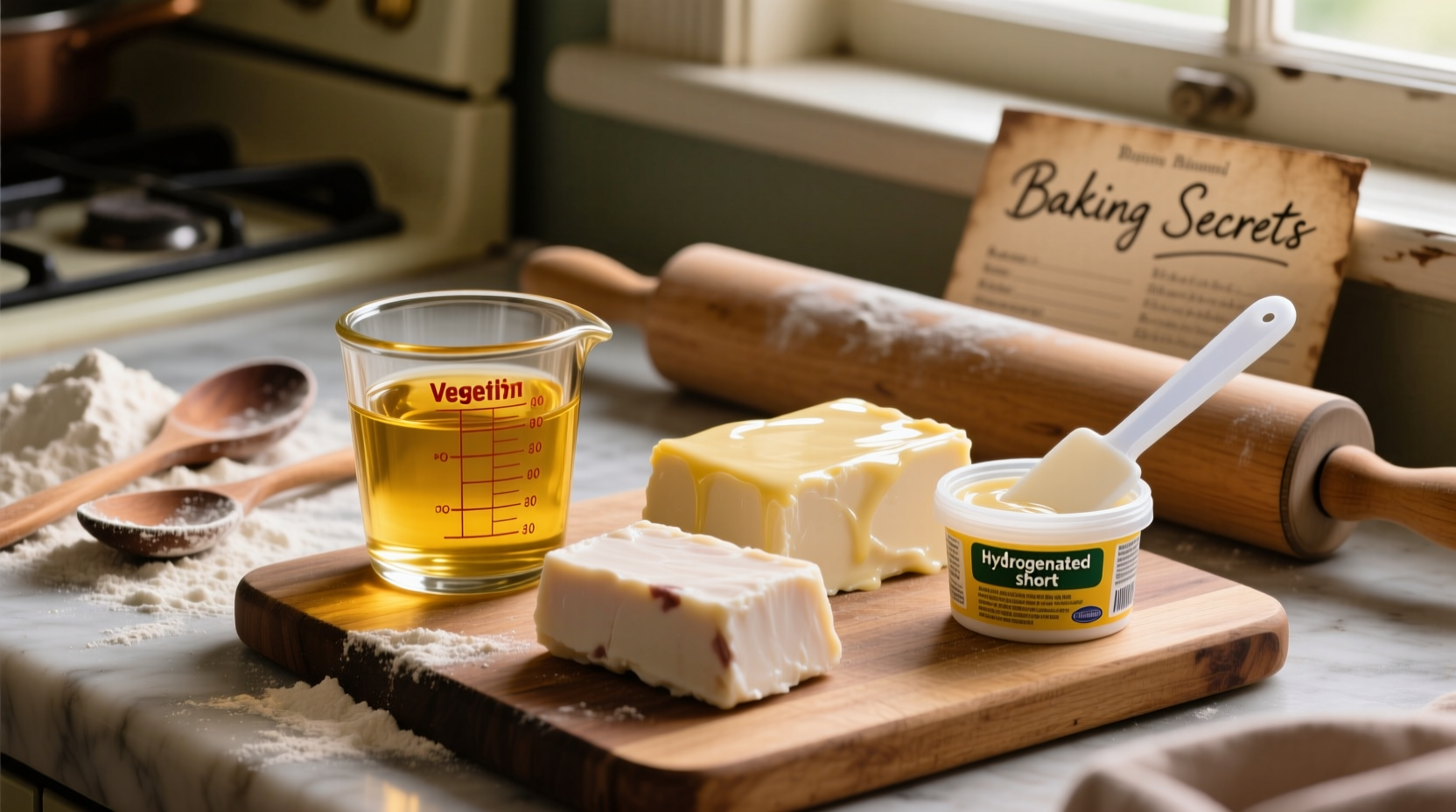Understanding Shortening: The Baking Essential You Need to Know
When you're following a recipe that calls for shortening, you're working with a crucial ingredient that transforms ordinary dough into extraordinary pastries. Unlike butter or oil, shortening's unique properties make it indispensable for achieving that perfect flaky pie crust or melt-in-your-mouth cookie. Let's explore why this humble ingredient deserves a permanent spot in your pantry.
What Exactly Is Shortening?
Shortening gets its name from its ability to “shorten” gluten strands in dough, resulting in tender baked goods. Chemically speaking, it's a solid fat created through hydrogenation – a process that converts liquid vegetable oils into solid fats by adding hydrogen molecules. This process creates a neutral-flavored fat with a higher melting point than butter, making it ideal for specific baking applications.
The most common form is vegetable shortening, originally developed as a more affordable alternative to animal fats. Modern shortening typically contains 100% fat with no water content, unlike butter which contains about 15-20% water. This difference significantly impacts baking results, as water creates steam that can develop gluten.

The Evolution of Shortening: A Brief Timeline
Shortening's journey from laboratory creation to kitchen staple reveals how food science transformed home baking:
- 1911 - Procter & Gamble introduces Crisco, the first vegetable-based shortening, made from cottonseed oil
- 1920s-1940s - Shortening becomes popular during wartime rationing when butter was scarce
- 1950s-1980s - Shortening reaches peak popularity as the go-to fat for pie crusts and fried foods
- 1990s - Health concerns about trans fats lead manufacturers to reformulate products
- 2000s-Present - Modern shortening products are trans-fat free while maintaining baking properties
According to USDA FoodData Central records, the hydrogenation process was initially developed to create stable cooking fats that wouldn't spoil quickly, addressing food preservation challenges of the early 20th century. The American Heart Association notes that modern shortening formulations have eliminated harmful trans fats while preserving the functional properties bakers rely on.
How Shortening Works Its Magic in Baking
The science behind shortening explains why it outperforms other fats for certain applications. When you incorporate shortening into flour, its solid structure creates thin layers of fat that coat flour particles. During baking, these fat layers melt, leaving air pockets that create flakiness. Because shortening has a higher melting point (around 117°F) than butter (90-95°F), it remains solid longer in the oven, allowing more time for steam to create those desirable layers.
Professional bakers consistently achieve more consistent results with shortening for pie crusts because its neutral flavor doesn't compete with fillings, and its 100% fat content creates more reliable flakiness. When making biscuits or scones, shortening produces a more tender crumb structure than butter because it doesn't incorporate as much air during the “cutting in” process.
Shortening vs. Other Fats: When to Use What
| Fat Type | Fat Content | Melting Point | Best For | Limitations |
|---|---|---|---|---|
| Vegetable Shortening | 100% | 117°F | Pie crusts, biscuits, cookies | Neutral flavor, processed ingredient |
| Butter | 80-82% | 90-95°F | Cakes, pastries, sauces | Water content can develop gluten |
| Lard | 100% | 110-120°F | Flaky pie crusts, tamales | Animal product, distinct flavor |
| Coconut Oil | 100% | 76°F | Vegan baking, some cookies | Low melting point, coconut flavor |
This comparison reveals why shortening excels in specific applications. For pie crusts requiring maximum flakiness, shortening's higher melting point creates more defined layers than butter. However, for cakes where flavor matters more than structure, butter's richness often wins. Understanding these differences helps you make informed choices based on your baking goals rather than following recipes blindly.
Practical Applications: Getting the Most From Shortening
When working with shortening, temperature control is crucial. Unlike butter, which benefits from being cold but pliable, shortening performs best when slightly softened (around 70°F). This temperature allows for easier incorporation into flour while maintaining its structure. For pie crusts, many professional bakers use a 50/50 blend of shortening and butter to achieve both flakiness and flavor.
When measuring shortening, use the “scoop and level” method rather than packing it down, as shortening's density can lead to over-measuring. For creaming applications in cookies, beat shortening with sugar for 3-5 minutes to incorporate maximum air, which contributes to cookie spread and texture. In pastry applications, handle shortening minimally to prevent it from warming too much, which would reduce its effectiveness at creating flakiness.
When Shortening Isn't the Right Choice
Despite its advantages, shortening isn't universally superior. For applications where flavor is paramount – like buttercream frosting or delicate cakes – butter's rich taste typically wins. When making laminated doughs like croissants, butter's water content creates steam that contributes to rise, something pure shortening can't replicate. Additionally, for health-conscious bakers, the highly processed nature of shortening may be a concern compared to less refined fats.
Understanding these context boundaries helps you make informed decisions. The James Beard Foundation's baking guidelines note that the best bakers don't view shortening as a “better” fat, but rather as a “different” fat with specific applications where it excels. This nuanced approach separates professional results from amateur attempts.
Shortening Substitutions: What Works and What Doesn't
Sometimes you'll need to substitute shortening. Here's what actually works based on baking science:
- Butter - Use 1 cup butter plus 2 tablespoons flour to compensate for water content
- Lard - 1:1 substitution, but expect slightly different flavor profile
- Coconut oil - Only works in recipes where coconut flavor is acceptable
- Margarine - Choose sticks with at least 80% fat content for best results
When substituting, remember that water content is the critical factor. Butter contains water that creates steam during baking, which can develop gluten and alter texture. The added flour in butter substitutions helps absorb this excess moisture. For pie crusts specifically, pastry chefs at the Culinary Institute of America recommend a 75% shortening to 25% butter blend as the optimal compromise between flakiness and flavor.
Storing and Handling Shortening Properly
Shortening's shelf stability is one of its advantages, but proper storage matters. Keep it in its original container away from strong odors, as shortening can absorb surrounding smells. Unopened containers last 1-2 years in a cool, dark place. Once opened, use within 6 months for best quality. Never refrigerate shortening unless specified by the manufacturer, as temperature fluctuations can cause condensation that affects performance.
When measuring shortening for recipes, lightly grease your measuring cup first to ensure complete release. For precise measurements in professional settings, many bakers prefer weighing shortening (8 oz per cup) rather than using volume measurements, which can vary based on packing density.
Frequently Asked Questions
Is shortening the same as lard?
No, shortening and lard are different. Shortening is made from hydrogenated vegetable oils, while lard comes from rendered pork fat. Though both are 100% fat with similar melting points, lard has a distinct flavor and is an animal product, whereas shortening is plant-based and neutral in flavor.
Why do pie crust recipes call for shortening?
Pie crust recipes use shortening because its higher melting point (117°F) creates more defined flaky layers than butter. The 100% fat content coats flour particles more effectively, preventing gluten development and yielding a more tender, consistent crust that's less prone to shrinking during baking.
Can I use shortening instead of butter in cookies?
Yes, but with different results. Shortening produces cookies that spread more, have a softer texture, and stay chewy longer. Butter creates cookies with better flavor and a crisper edge. For best results, many bakers use a 50/50 blend of shortening and butter to balance texture and flavor.
Is modern shortening still bad for you?
Most shortening products have eliminated harmful trans fats since the FDA's 2015 ruling. Modern shortening contains 0g trans fat per serving and is primarily composed of unsaturated fats. However, like all fats, it should be consumed in moderation as part of a balanced diet according to dietary guidelines from health authorities.
How do I make my own shortening substitute?
For a homemade alternative, combine 1 cup coconut oil with 1/4 cup neutral oil (like sunflower oil), then chill until solid. This creates a 100% fat product similar to shortening, though with a lower melting point. Note that it will impart a slight coconut flavor, so it works best in recipes where that flavor complements other ingredients.











 浙公网安备
33010002000092号
浙公网安备
33010002000092号 浙B2-20120091-4
浙B2-20120091-4